ALEC: Destroying the American Economy, One State at a Time
The American Legislative Exchange Council — which authors ultra-conservative legislation and promulgates it to state legislatures nationwide — has a little index measure of states’ “competitiveness,” which supposedly results in greater prosperity for those states that rank highly.
Does it? Let’s let the numbers speak for themselves:
Source (PDF).
Cross-posted at Asymptosis.

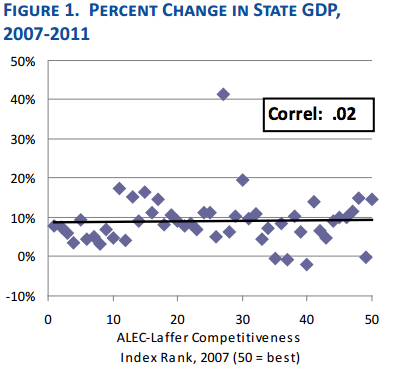
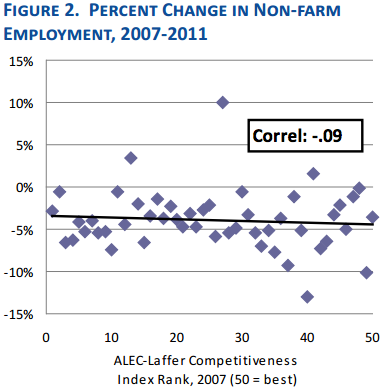
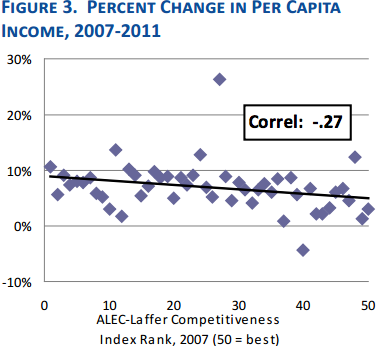
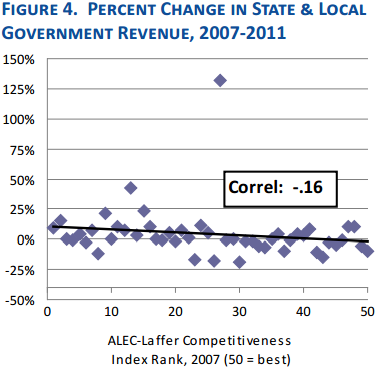
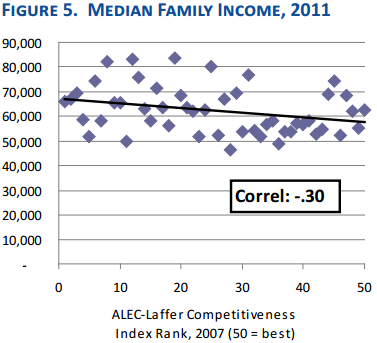
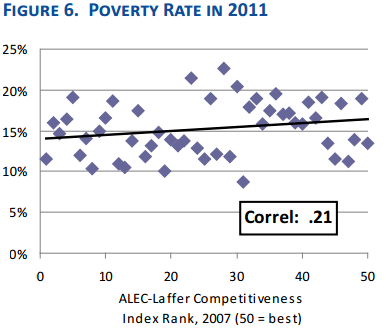
Rich people do fine in higher income states, while the “middle class” struggles with the high cost of living, including costly regulations, and are taxed in more ways you can imagine.
Moreover, I’ve seen “middle class” businesses cut corners to survive in California, which is unnecessary in Colorado. It’s ironic a regulation to raise quality, on top of an overabundance of regulations, results in lower quality.
PT,
Construction important to recovery, but struggles could drag Colorado down
Read more: Construction important to recovery, but struggles could drag Colorado down – The Denver Post http://www.denverpost.com/ci_18204732#ixzz2yxZTMTZe
Several other articles on other businesses can be found lest you say construction is not middle class. You are doing the PT thing again, and not well.
Come on PT. This is gobblygoop piled on argument by (uncited) anecdote.
Responding to it is like slicing mush, you aren’t sure whether there is anything to cut or whether the cuts register.
There is no absolute requirement for even the most prolific commenters to do so if you have nothing to say. And if you DO have something to say then SAY it.
Preferably with some degree of specificity. Which scare quotes around ‘middle class’ and “I have seen” are not exactly contributive. Who are they? Under what definition of ‘middle class’? And what kind of ‘corners’ were ‘cut’ and how?
Bruce, the definition of “middle class” varies between states and regions or cities.
For example, I know, from personal experience, although it’s not scientific, my standard of living would be at least twice as high in Colorado than California based on my labor hours, and there are differences between regions, e.g. Alameda county and Orange county in California.
Moreover, there are budget constraints and trade-offs. Spending to comply with costly regulations, particularly for the “middle class,” means finding ways to reduce spending elsewhere, e.g. being forced to buy cheaper, and lower quality, inputs for production, which may have undesirable effects.
Also, it should be noted, the comparisons of those variables between 2007 and 2011 can skew the results, because there may be more variability in some states than others when the economy is doing well and when it’s doing poorly.
geez,
You are criticized(correctly) for a post that is “gobblygoop piled on argument by (uncited) anecdote” and respond to it with a post that is actually contains a higher level of “gobblygoop piled on argument by (uncited) anecdote”.
You are the Stepford Wife of RWDWs.
Paging Dr. Inference: this patient needs an exogenous instrument, stat!
@Greg:
😉
Sure, and, “ALEC: Destroying the American Economy, One State at a Time” is not “gobblygoop piled on.” Afterall, ignorance is ok, if you’re a political hack.
Dan, I think, the housing boom took place mostly in four states – California, Nevada, Arizona, and Florida. And, I think, three of those states were GOP states. Yes, the housing market is still in bad shape. Chart:
https://research.stlouisfed.org/fred2/series/HSN1F
It’s unfortunate so many homeowners are becoming renters.
PeakTrader
April 15, 2014 5:46 pm
Sure, and, “ALEC: Destroying the American Economy, One State at a Time” is not “gobblygoop piled on.”
Did you miss all those facts in the charts? And the link to where the facts came from?
Now, notice the “facts” in your response(let alone no links to where they came from).
EMichael, get real.
Another post without a fact or link.
You’re hot today.